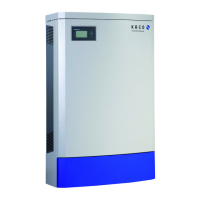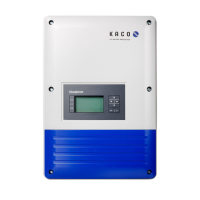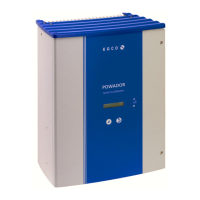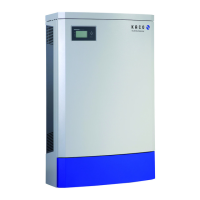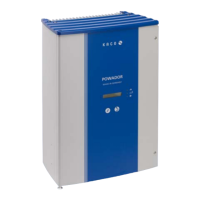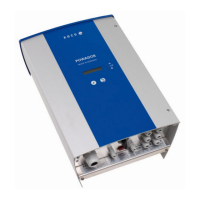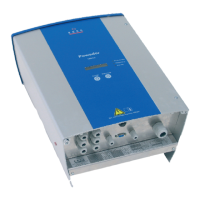Electrical connection
Operating Instructions for Powador .-. TL_EN Page
EN
Authorised electrician
Connecting the PV generator
DANGER
Danger to life from electric shock!
Severe injury or death will result if the live connections are touched. When there is solar radiation, DC
voltage will be present at the open ends of the DC cables.
› Do not touch the exposed ends of the cables.
› Avoid short circuits.
› Check polarity and mark it accordingly before connecting to connection terminals.
Check polarity
ඣ Use a measurement device with a input voltage range for DC at least V.
. Remove existing connection plugs.
. Remove the insulation from the cable end and protect it against uninten-
tional contact.
. Set the input voltage range for DC at the device >V
. Measure DC cables with the measurement device at the poles.
Note: The no-load voltage of the PV modules must never exceed % of the
max. input voltage of the device at an ambient temperature of more than °C.
Otherwise check the interconnection of the PV modules.
. Mark DC wires in accordance with the polarity.
-
+
Figure : Tester
Connecting the PV generator
. Unscrew the cable ttings.
. Remove the outer cladding of the DC cables.
. Insert the DC cables through the cable ttings into the connection area.
. Strip the insulation from the DC cables.
. Connect the ends of the cables to the DC connections according to the polarity.
. Check secure t of all connected cables.
. Tighten the cable ttings.
. The requirements of protection rating IP are met by closing the unused cable ttings with blind caps.
» The inverter is connected to the PV generator.
. Connecting the interfaces
All interfaces are located on the connection circuit board in the upper area of the inverter door. Use the cable t-
tings provided and connect the connection cables to the circuit board.
DANGER
Danger to life from electric shock!
Severe injury or death may result from improper use of the interface connections and failure to
observe protection class III.
› The SELV circuits (SELV: safety extra low voltage) can only be connected to other SELV circuits with
protection class III.
NOTE
When routing the interface connection cable, note that too little clearance to the DC or AC cables can
cause interference during data transfer.

